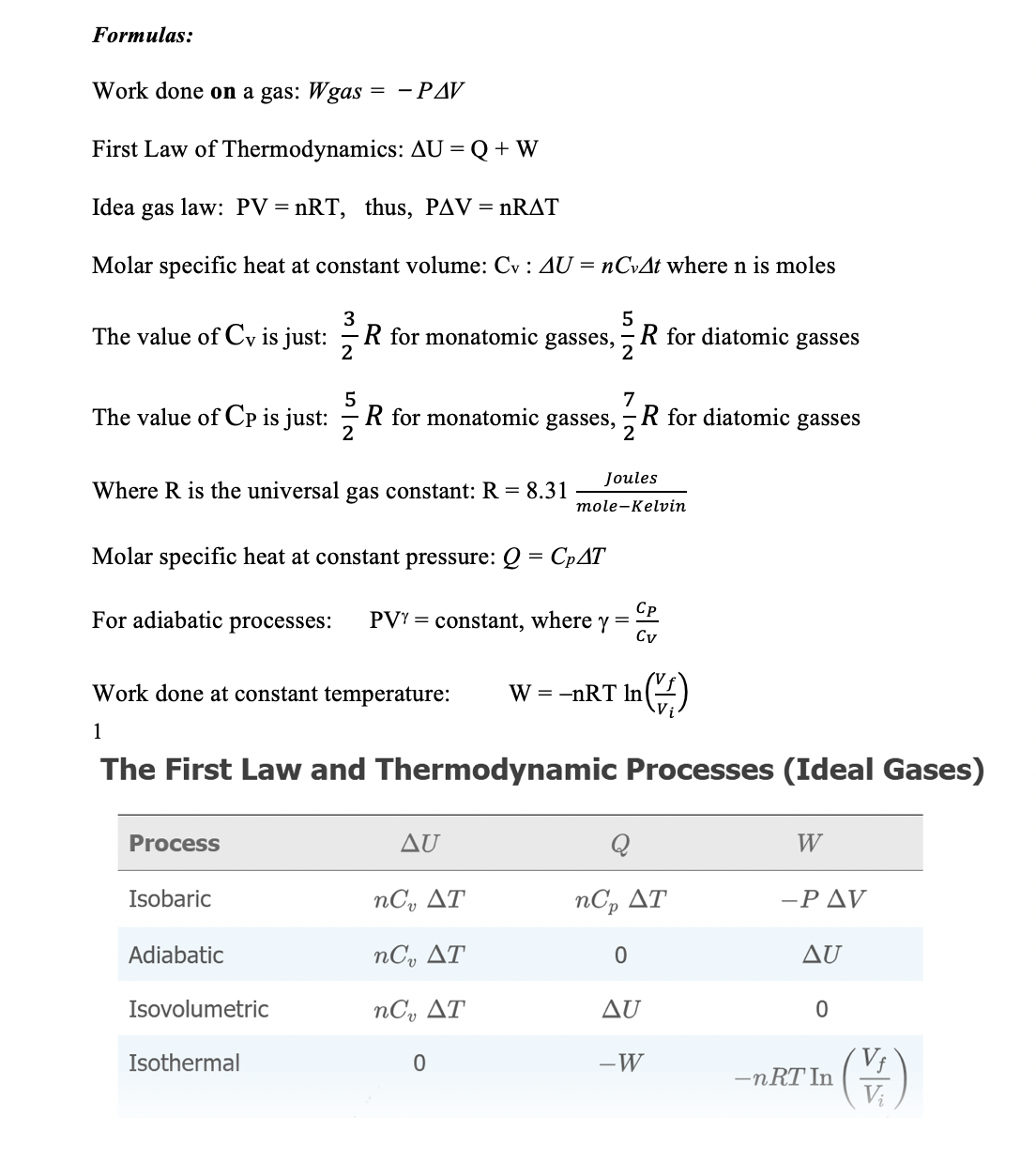A flexible box contains 5.60 grams of nitrogen gas (N2) which is maintained at a constant pressure of 1.35 x 105 Pa. The box is placed over a fire, causing the volume to increase from 0.00200 m³ to 0.00300 m³. Find the increase in temperature of the gas. (For N2 molar mass M = 28 grams.)
A flexible box contains 5.60 grams of nitrogen gas (N2) which is maintained at a constant pressure of 1.35 x 105 Pa. The box is placed over a fire, causing the volume to increase from 0.00200 m³ to 0.00300 m³. Find the increase in temperature of the gas. (For N2 molar mass M = 28 grams.)
Principles of Physics: A Calculus-Based Text
5th Edition
ISBN:9781133104261
Author:Raymond A. Serway, John W. Jewett
Publisher:Raymond A. Serway, John W. Jewett
Chapter16: Temperature And The Kinetic Theory Of Gases
Section: Chapter Questions
Problem 38P
Related questions
Question

Transcribed Image Text:A flexible box contains 5.60 grams of nitrogen gas (N2) which is maintained at a
constant pressure of 1.35 x 10$ Pa. The box is placed over a fire, causing the
volume to increase from 0.00200 m3 to 0.00300 m³. Find the increase in
temperature of the gas.
(For N2 molar mass M = 28 grams.)

Transcribed Image Text:Formulas:
Work done on a gas: Wgas
= - PAV
First Law of Thermodynamics: AU = Q+ W
Idea gas law: PV = nRT, thus, PAV = NRAT
Molar specific heat at constant volume: Cv : AU = nCvAt where n is moles
3
R for monatomic gasses,
2
5
R for diatomic gasses
2
The value of Cv is just:
5
R for monatomic gasses,
2
7
for diatomic gasses
2
The value of Cp is just:
Joules
Where R is the universal gas constant: R = 8.31
mole-Kelvin
Molar specific heat at constant pressure: Q = CPAT
CP
For adiabatic processes:
PVY = constant, where
Y
Cv
Work done at constant temperature:
W = -nRT In(
1
The First Law and Thermodynamic Processes (Ideal Gases)
Process
AU
Q
W
Isobaric
nC, AT
nC, AT
-P AV
Adiabatic
nC, AT
Δυ
Isovolumetric
nC, AT
AU
Isothermal
-W
-nRT In
Expert Solution
This question has been solved!
Explore an expertly crafted, step-by-step solution for a thorough understanding of key concepts.
Step by step
Solved in 2 steps with 2 images

Knowledge Booster
Learn more about
Need a deep-dive on the concept behind this application? Look no further. Learn more about this topic, physics and related others by exploring similar questions and additional content below.Recommended textbooks for you

Principles of Physics: A Calculus-Based Text
Physics
ISBN:
9781133104261
Author:
Raymond A. Serway, John W. Jewett
Publisher:
Cengage Learning


An Introduction to Physical Science
Physics
ISBN:
9781305079137
Author:
James Shipman, Jerry D. Wilson, Charles A. Higgins, Omar Torres
Publisher:
Cengage Learning

Principles of Physics: A Calculus-Based Text
Physics
ISBN:
9781133104261
Author:
Raymond A. Serway, John W. Jewett
Publisher:
Cengage Learning


An Introduction to Physical Science
Physics
ISBN:
9781305079137
Author:
James Shipman, Jerry D. Wilson, Charles A. Higgins, Omar Torres
Publisher:
Cengage Learning